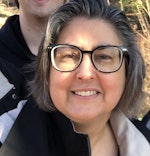The United States first began adding fluoride to community water in 1945 in Grand Rapids, Michigan, and shortly thereafter local schoolchildren exhibited significant declines in tooth decay.1 From there, adding fluoride to community water systems began to spread across the country. As of 2020, approximately 73% of the US population (more than 209 million people) now has access to fluoridated drinking water through public water systems.2
Tooth decay: A continual battle for dentistry
Despite efforts to address tooth decay, however, more than one in four (26%) US adults has untreated tooth decay,3 more than half of children aged 6–8 have had a cavity in at least one of their primary teeth,4 and more than half of adolescents aged 12–19 have had a cavity in at least one of their permanent teeth.4
According to the 2022 WHO Global Health Status Report,5 oral diseases affect close to 3.5 billion people worldwide. Globally, an estimated 2 billion people suffer from caries of permanent teeth, and 514 million children suffer from caries of primary teeth.6
Opinions about fluoride land on both sides of the fence, but here is some of our best content on fluoride and its effects on oral and systemic health.
Fluoride: A natural cavity fighter
Fluoride is often called nature’s cavity fighter. Fluorine is a naturally occurring mineral that helps prevent cavities by making the outer surface of the teeth more resistant to acidic attacks that cause tooth decay. Angie Wallace, RDH, writes about fluoride, including these topics:
- Origin and sources of fluoride
- Current research on fluoride
- Oral health guidelines for children
- Fluoride supplements
- Where bottled water fits in
- Fluoride’s effects on systemic health
- Fluoride treatments for patients
- Importance of patient education
Here’s an excerpt from her article:
“Before water fluoridation, children had about three times or more cavities.7 Because of the important role fluoride has played in the reduction of tooth decay, the Centers for Disease Control and Prevention has named community water fluoridation as one of the 10 great public health achievements of the 20th century.8 Studies prove water fluoridation continues to help prevent tooth decay by at least 30% in children and adults, even with fluoride available from other sources, such as toothpaste and fluoride rinses. Today, at least 75% of the US population is served by fluoridated community water systems.”9
Fluoride: What’s new, what’s not, and what do dental patients need to know?
Peeling back the layers of a controversial topic
In this episode of the Dentistry Unmasked podcast, Drs. Pamela Maragliano-Muniz, David Rice, and Brian Novy look at the controversial aspects of fluoride. They stress that dental professionals should be talking to their teams about why they use fluoride, for whom they use fluoride, and when they use fluoride. Fluoride is not for everyone … but in the right amounts, with the right product combinations, it’s good for many!
Is fluoride all it’s cracked up to be?
Are your patients worried about fluoride’s risks?
If your patients have questions or concerns about fluoride, share this slideshow about the pros and cons of fluoride and some fluoride alternatives they can consider.
Editor’s note: This article first appeared in Clinical Insights newsletter, a publication of the Endeavor Business Media Dental Group. Read more articles and subscribe.
References
- Statement on the evidence supporting the safety and effectiveness of community water fluoridation. Division of Oral Health, National Center for Chronic Disease Prevention and Health Promotion. Centers for Disease Control and Prevention. Reviewed January 9, 2024. Accessed March 13, 2024. https://www.cdc.gov/fluoridation/guidelines/cdc-statement-on-community-water-fluoridation.html
- 2020 fluoridation statistics. Division of Oral Health, National Center for Chronic Disease Prevention and Health Promotion. Centers for Disease Control and Prevention. Reviewed July 5, 2023. Accessed March 13, 2024. https://www.cdc.gov/fluoridation/statistics/2020stats.htm
- Adult oral health. Facts about adult oral health. Division of Oral Health, National Center for Chronic Disease Prevention and Health Promotion. Centers for Disease Control and Prevention. Reviewed December 22, 2020. Accessed March 13, 2024. https://www.cdc.gov/oralhealth/basics/adult-oral-health/index.html
- Children’s oral health. Overview. Division of Oral Health, National Center for Chronic Disease Prevention and Health Promotion. Centers for Disease Control and Prevention. Reviewed April 6, 2022. Accessed March 13, 2024. https://www.cdc.gov/oralhealth/basics/childrens-oral-health/index.html
- Global oral health status report: towards universal health coverage for oral health by 2030. World Health Organization. November 18, 2022. Accessed March 13, 2024. https://www.who.int/publications/i/item/9789240061484
- Oral health. World Health Organization. March 14, 2023. Accessed March 13, 2024. https://www.who.int/news-room/fact-sheets/detail/oral-health
- Yiamouyiannis JA. Water fluoridation and tooth decay: results from the 1986-1987 National Survey of U.S. Schoolchildren. Fluoride. 1990;23(2):55-67.
- Ten great public health achievements–United States, 1990-1999. Centers for Disease Control and Prevention. MMWR. 1999;48(12):241-243.
- Water fluoridation data and statistics. Division of Oral Health. National Center for Chronic Disease Prevention and Health Promotion. Centers for Disease Control and Prevention. Reviewed June 9, 2023. https://www.cdc.gov/fluoridation/statistics/index.htm
Vicki Cheeseman is an associate editor in Endeavor Business Media's Dental Group. She edits for Dental Economics, RDH, Perio-Implant Advisory, DentistryIQ, and Clinical Insights.









